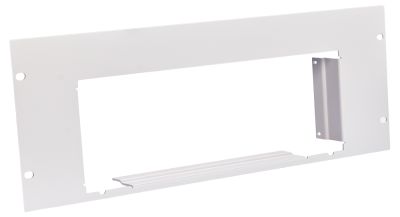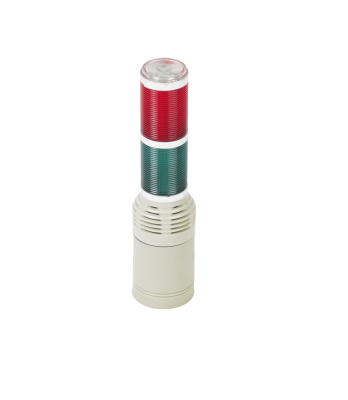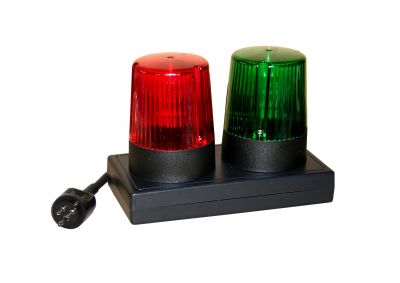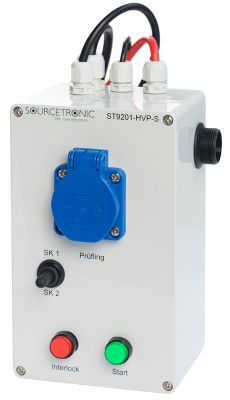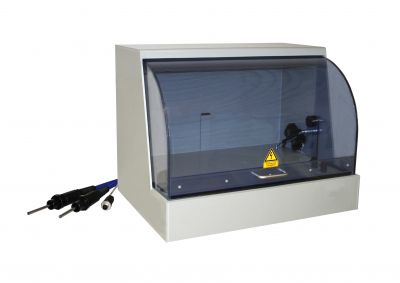Gecertificeerd kwaliteitsmanagementsysteem
Hoogspanningstesters evenals testkooien, testdummy's, kabels en meer
De robuuste hoogspanningstesters voor het testen van elektrisch isolatievermogen en diëlektrische sterkte vindt u hier. Alle hoogspanningstesters zijn ideaal voor veilige hoogspanningstests, zowel in de productie als in het laboratorium, bijvoorbeeld voor typetests.
Koop nu online hoogspanningstester:
- Robust 19" mounting frame
- Metal powder coated
- Device mounting front side
- Devices: ST9201
- Color: RAL7035 light gray
- Height: 4 HE
- Warning light incl. installation of the interface on the high-voltage tester
- Devices: ST9200 series, ST9300 series
- Cable length: 1.5m
- Standard: EN 50191
- Light: Red/green
- Function: rd HV ON/gr HV OFF
- Devices: hipot testers 36 series
- Signal lamp: red / green
- Conforming to all standards: VDE0104, EN50191
- Status:
- READY FOR OPERATION
- READY TO SWITCH ON
- IN OPERATION
- Voltage: 230V
- Cable length: 2m
- Contact unit for connecting an HVP06N test pistol to the ST9201
- 1x Schuko socket
- 1x push-button switch for closing the safety circuit
- 1x pushbutton switch to start the high-voltage test
- Voltage: 5 KVAC, 6 KVDC
- Ergonomic design
- Highly insulating special plastic
- Test Cage BIG-CAB for UX36 series
- Dimension (W/H/D): Outside: 1105 / 770 / 650 mm / Inside:1000 / 570 / 595 mm
- Access DUT: HV cable with UX36 plug /15kV
- Earth cable with UX36 plug
- Operation voltage: 7 KVAC, 10KVDC, 10A
- PVC design-housing
- Viewable transparent swinging hood
- Damping gas spring incl. final position damping
- Safety limit switch (2-pole)
- Standard alloy
- CE conform with EN 50191
- Protection class: IP30
- Weight: 25 kg
Hoogspanningstesters bepalen de isolatiesterkte en spanningsvastheid
Bij afstandsmetingen geldt ongeveer de regel: 1000V = 1mm afstand. Hoogspanningstesters die volgens VDE-normen in de stuktest worden gebruikt, hebben doorgaans spanningen tot ca. 6 kV.
Daarnaast zijn er speciale hoogspanningstesters en installaties verkrijgbaar met spanningen van 7 kV, 10 kV, 12 kV, 14 kV, 20 kV, 30 kV, 50 kV, 100 kV, 150 kV en 300 kV, evenals tussenliggende waarden. Hoogspanningstesters van deze klasse zijn zeer krachtig ontworpen en worden vooral gebruikt in grote testvelden en in de kabelindustrie. Tot de meegeleverde accessoires behoren: testpistolen, tweehandbedieningen, testkooien, HV-waarschuwingslampen en borden “Pas op: hoogspanningstest”. De elektronische hoogspanningstesters kunnen eenvoudig worden bediend en uitgelezen via de comfortabele testsoftware ST®Meter of Data View – standaard aangesloten via USB, LAN, CAN-Bus of RS232. Voor inbouw in 19”-testsysteem is een montageset beschikbaar.
Sourcetronic Hoogspanningstester ST9201
In deze video worden de hoogspanningstester ST9201, de functies en de varianten gepresenteerd.
Hoe werkt de hoogspanningstest?
De hoogspanningstest wordt uitgevoerd bij apparaten van beschermingsklasse I (met PE-beschermingsleiding) en beschermingsklasse II (zonder PE-beschermingsleiding). Daarbij wordt gecontroleerd of de isolatie van de stroomvoerende geleiders en de veiligheidsafstand tot de behuizing aan de eisen voldoet.
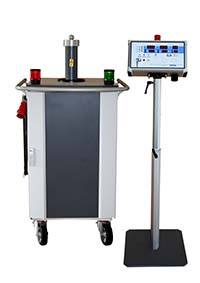
Een HV-test is in principe "GOED" wanneer er geen stroom vloeit. Bij een AC-hoogspanningstest op een testobject met capacitief gedrag zal echter een kleine stroom vloeien. Daarom beschikken de meeste hoogspanningstesters over een instelmogelijkheid voor de teststroom. Als richtwaarde voor de spanning bij een HV-test geldt: de dubbele nominale spanning van het testobject plus 1000 V. Voor een 230-volt apparaat dus: 1000 V + 2 x 230 V = 1460 V (≈1500V).
Er wordt onderscheid gemaakt tussen AC- en DC-hoogspanningstests. De VDE (Vereniging voor Elektrotechniek, Elektronica en Informatietechniek) staat voor productiebedrijven steeds meer de DC-HV-test toe, die door het ontbreken van frequentie voor de mens, respectievelijk voor het hart, veiliger is. Voor de werkplekbeveiliging zijn de voorschriften van de beroepsvereniging bindend (volgens EN 50191). Een speciale afscherming van de werkplek is niet vereist wanneer getest wordt met AC-hoogspanning tot 3 mA of DC-hoogspanning tot 12 mA. De DC-hoogspanningstest heeft dus het voordeel dat tot 12 mA geen veiligheidsmaatregelen nodig zijn.
Arbeidsveiligheid bij het gebruik van hoogspanningstesters:
a) Hoogspanningstests met stromen: |>3 mA/AC of |>12 mA/DC
- Speciale HV-testruimte of
- Ketting, waarschuwingsbord, waarschuwingslampenset, testpistolen / testkooi / tweehandbediening
b) Hoogspanningstests met stromen: I - geen voorzorgsmaatregelen
- of alleen voorzorgsmaatregelen voor “secundaire ongelukken”, zoals schrikreacties na een elektrische schok
Hoogspanningstests op testobjecten met storingsonderdrukkingscondensatoren of Y-condensatoren kunnen worden uitgevoerd met AC en DC. Ook bij de DC-hoogspanningstest kan via de laadstroommeting informatie worden verkregen over de ingebouwde condensator.
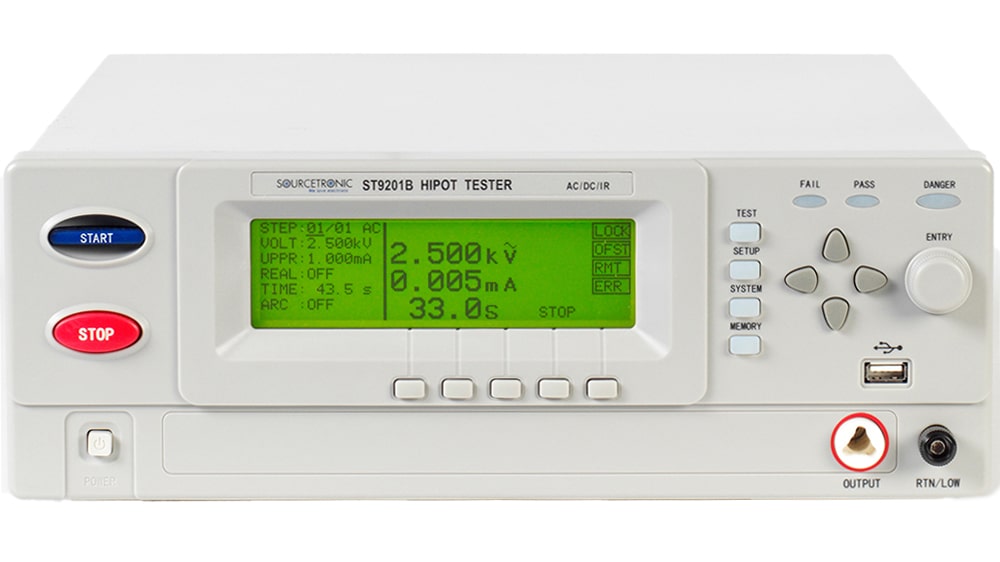
FAQ: Hulp en tips
Hieronder vindt u hulp en tips voor hoogspanningstesters, hoogspanningstesters en hoogspanningsinstallaties van Sourcetronic – van algemene tot specifieke vragen over de verschillende apparaattype, vindt u hier enkele van de meest gestelde vragen:
Hoe laad ik de firmware-update op de ST9201? Hoe moet een hoogspanningstestplaats beveiligd zijn? Wat betekent stroombegrensd?

